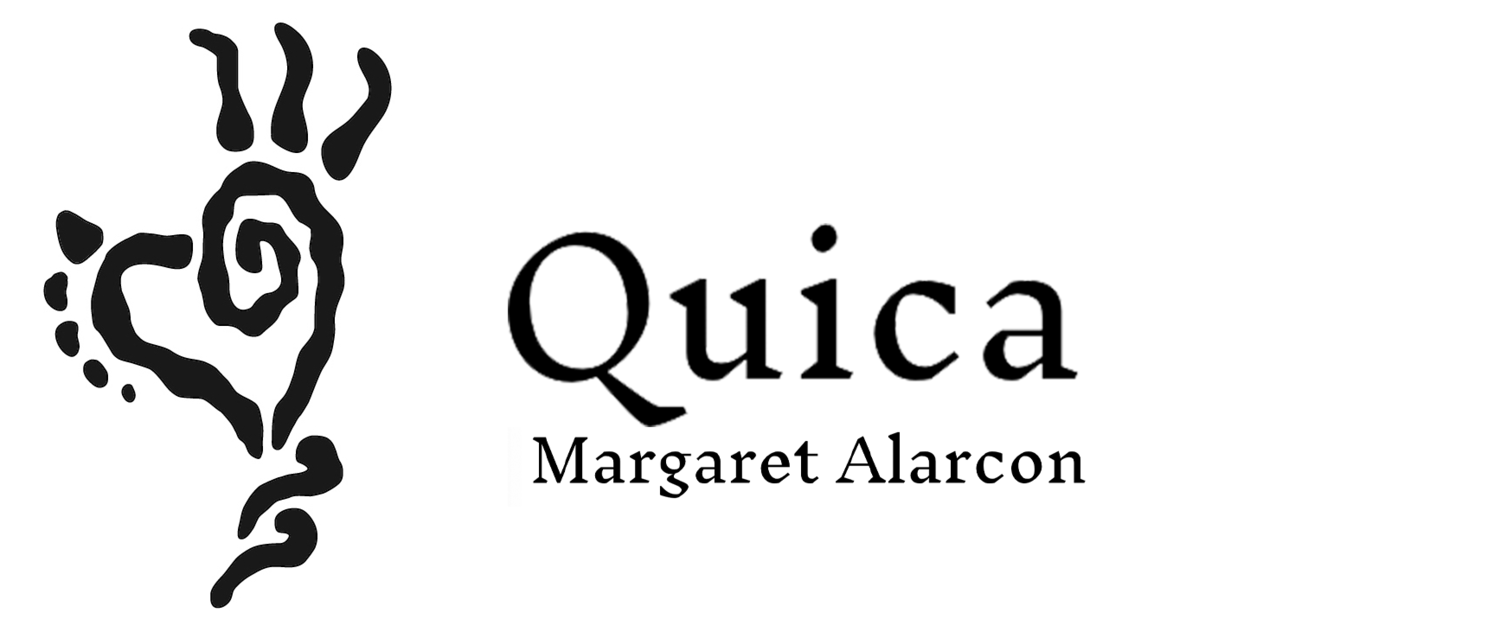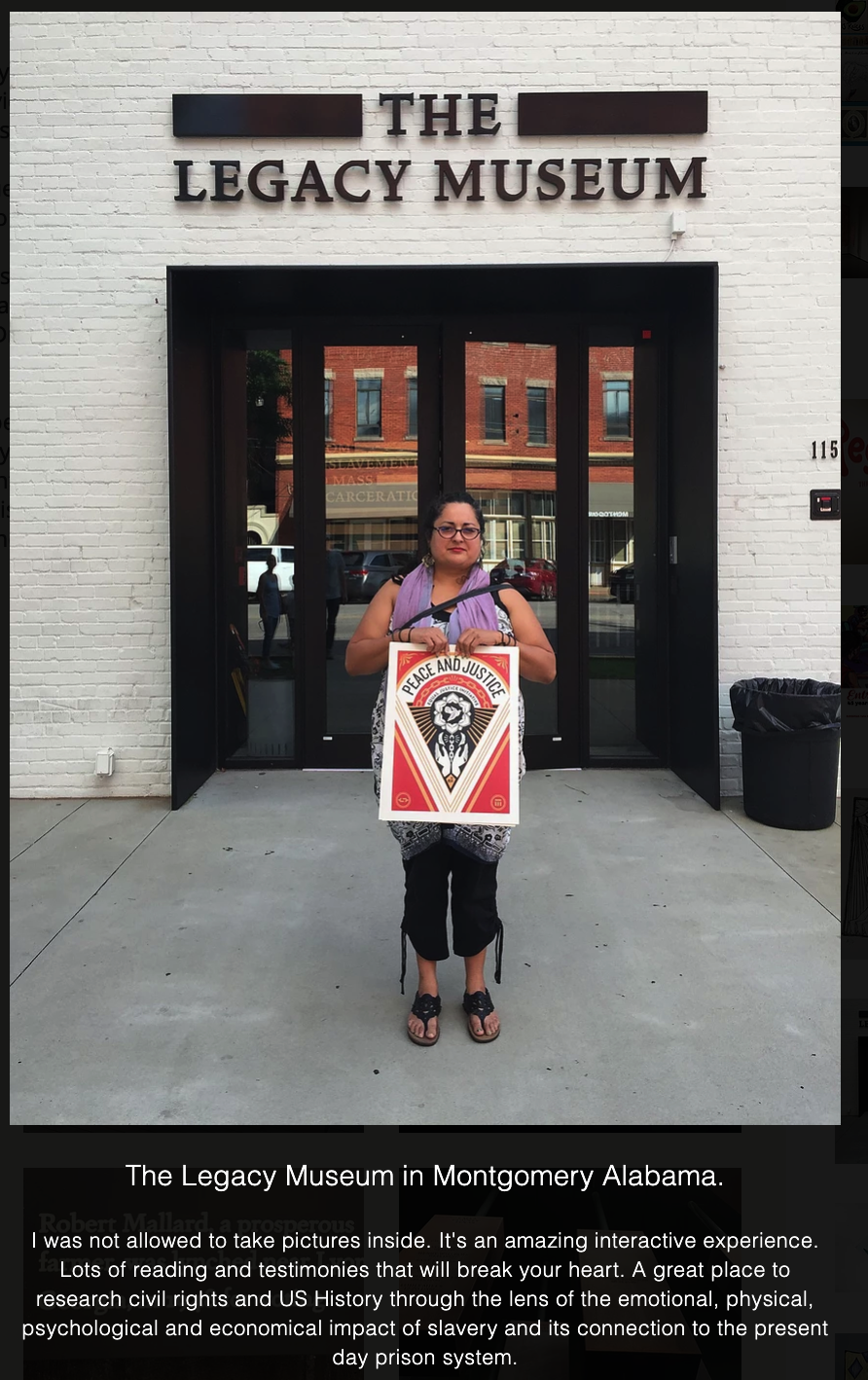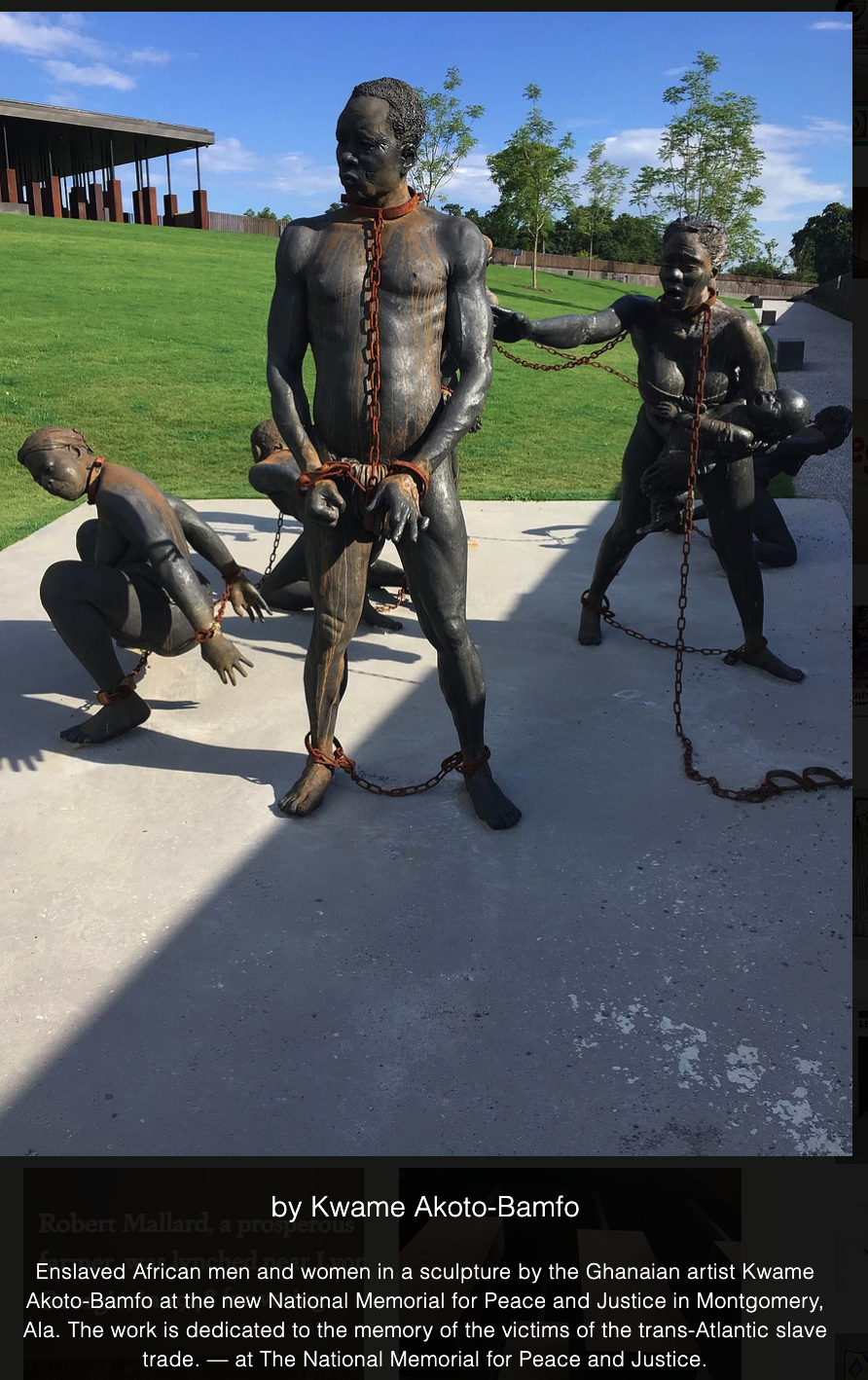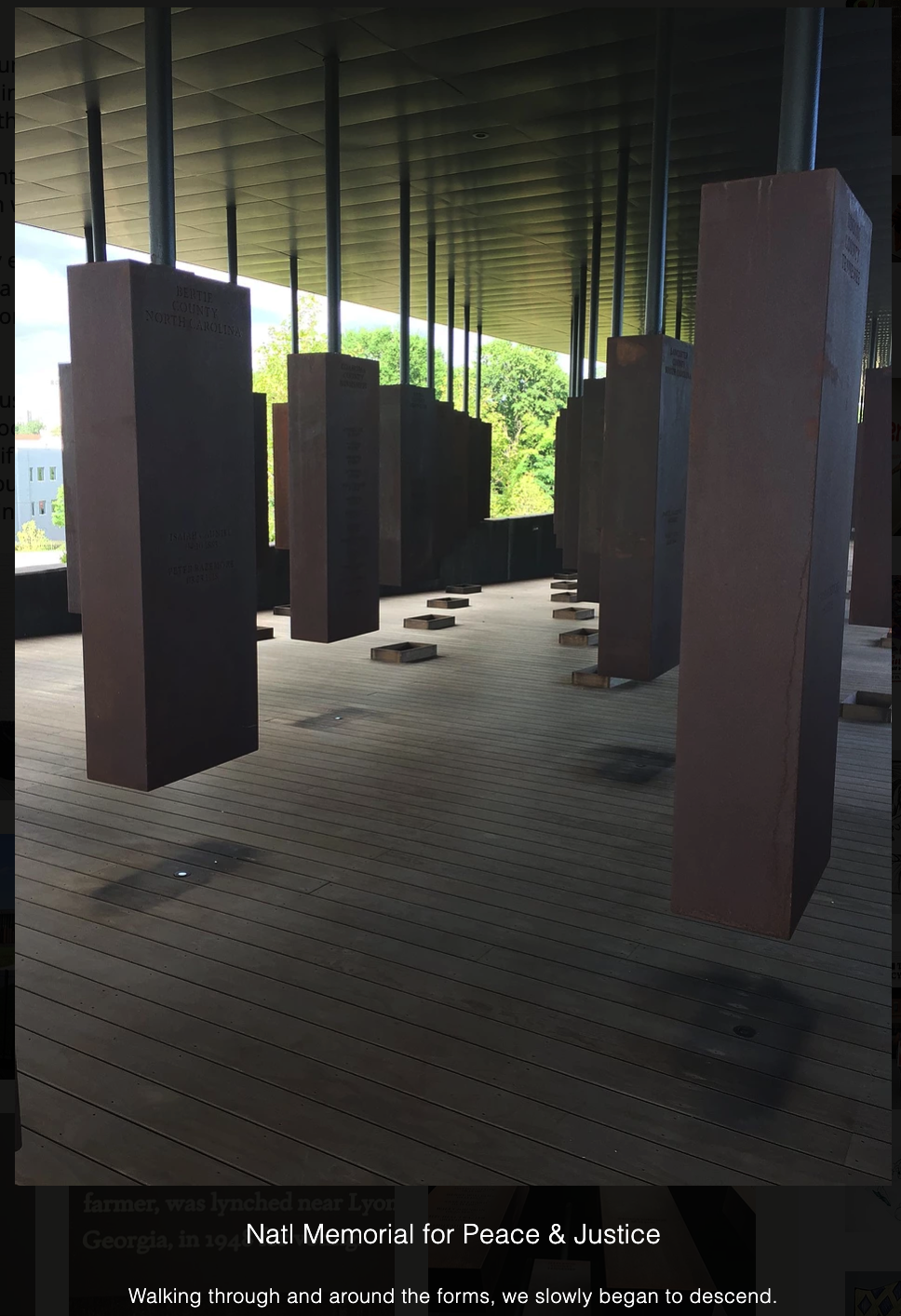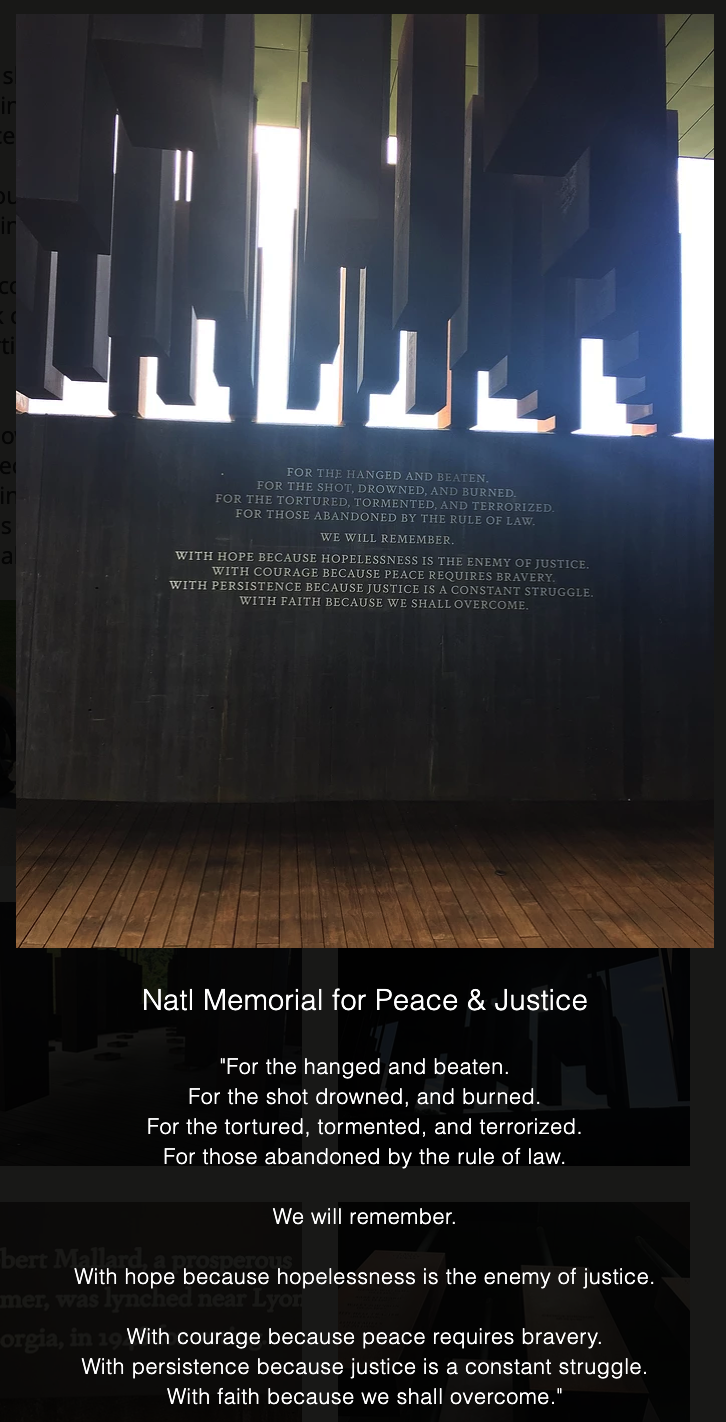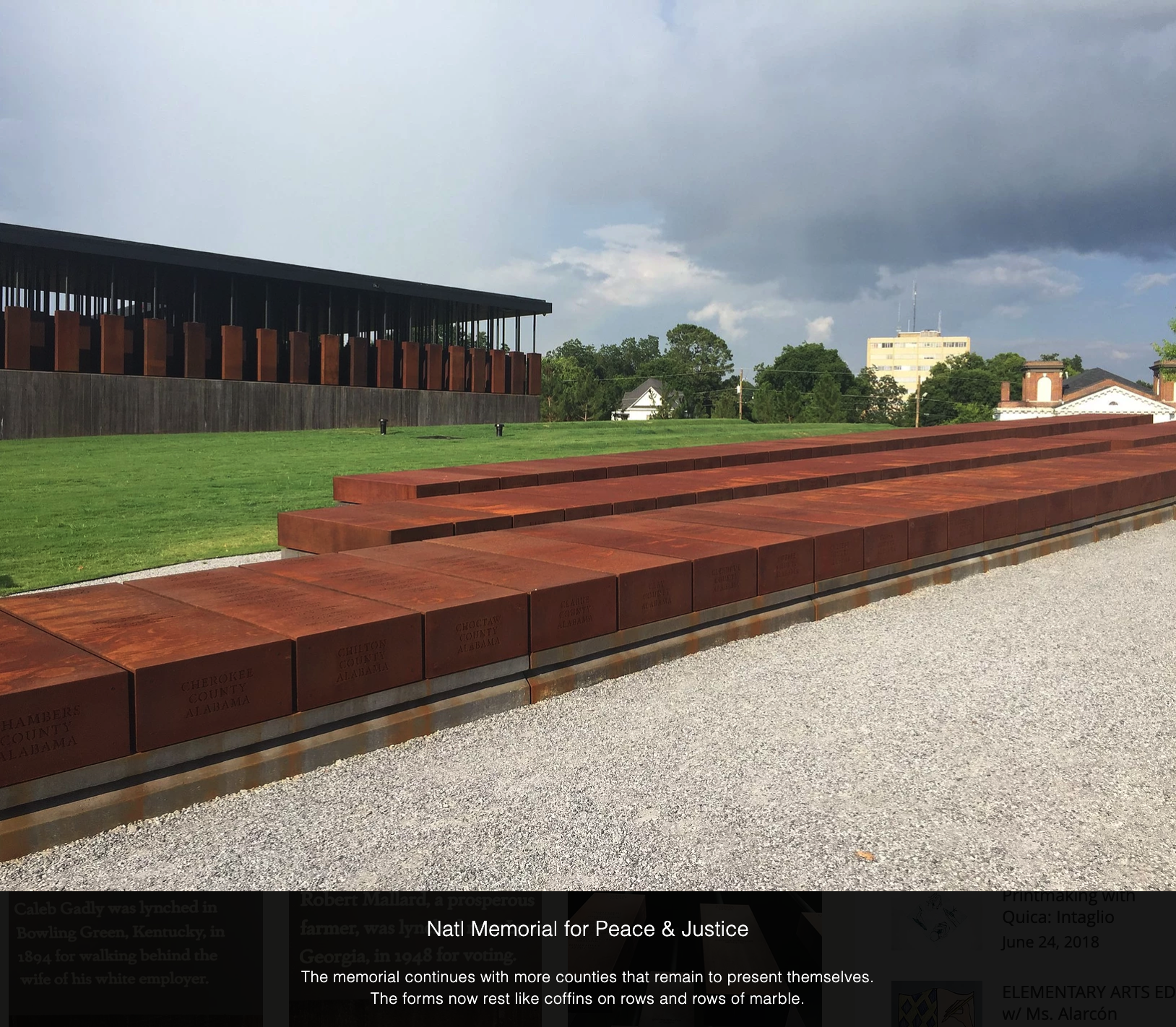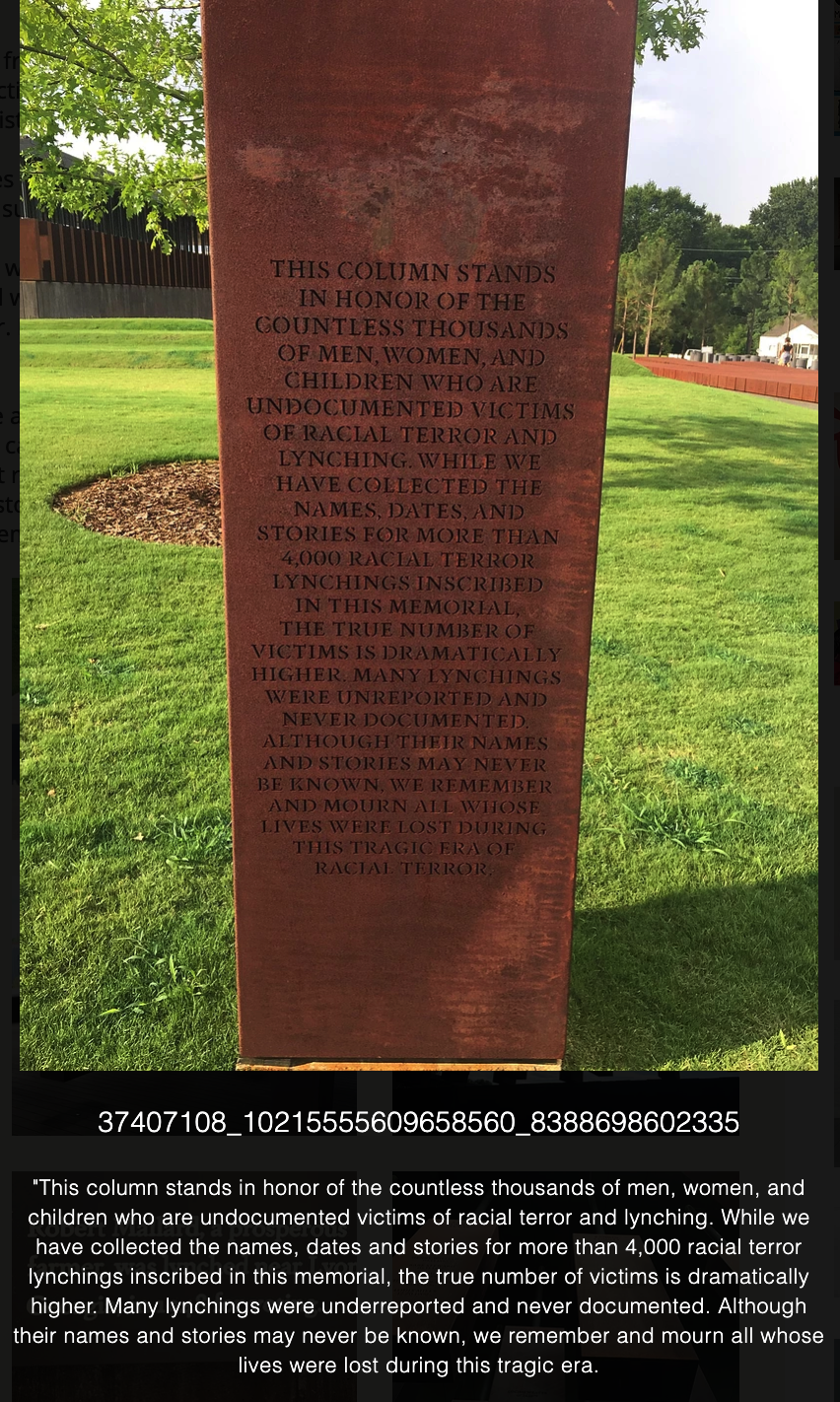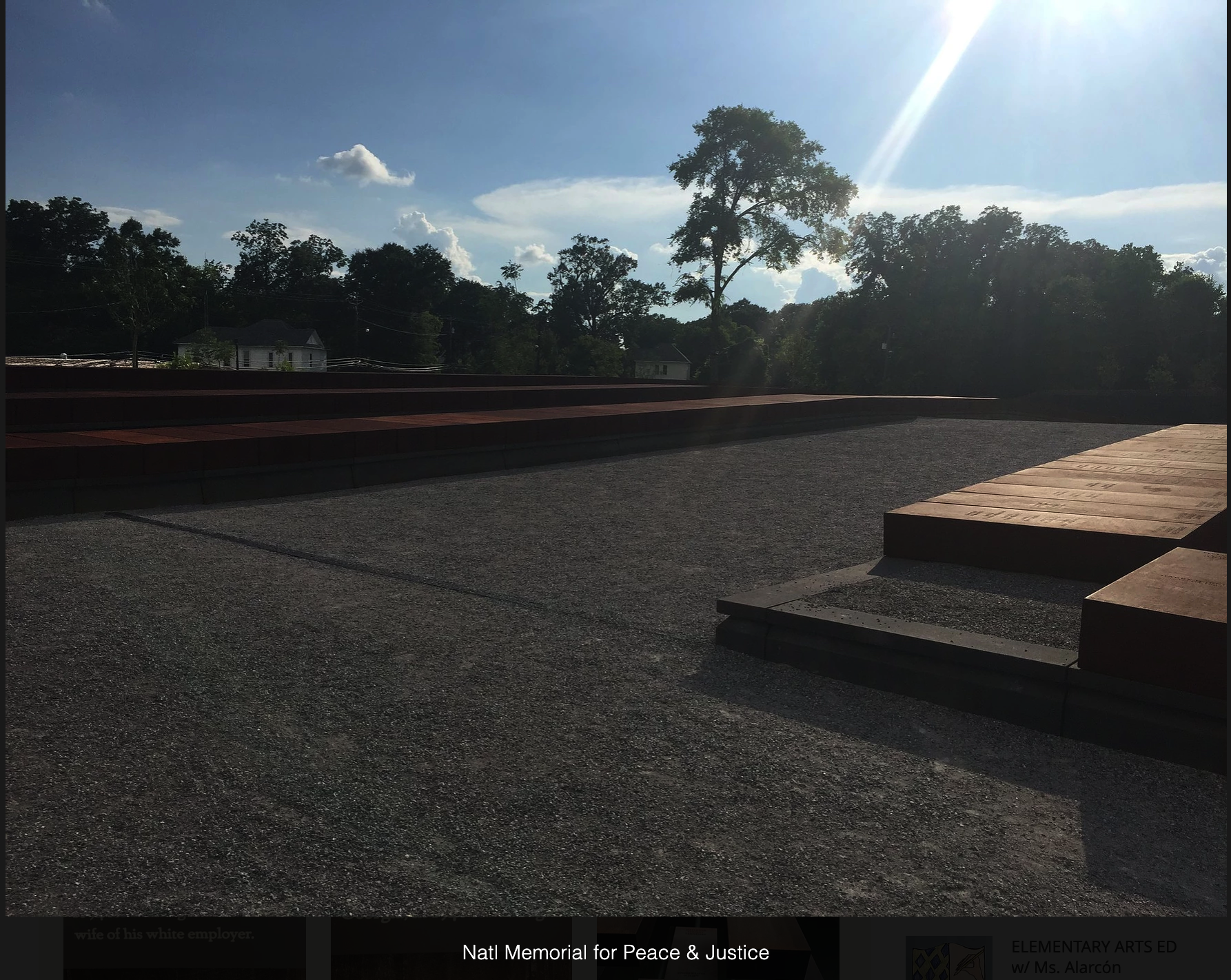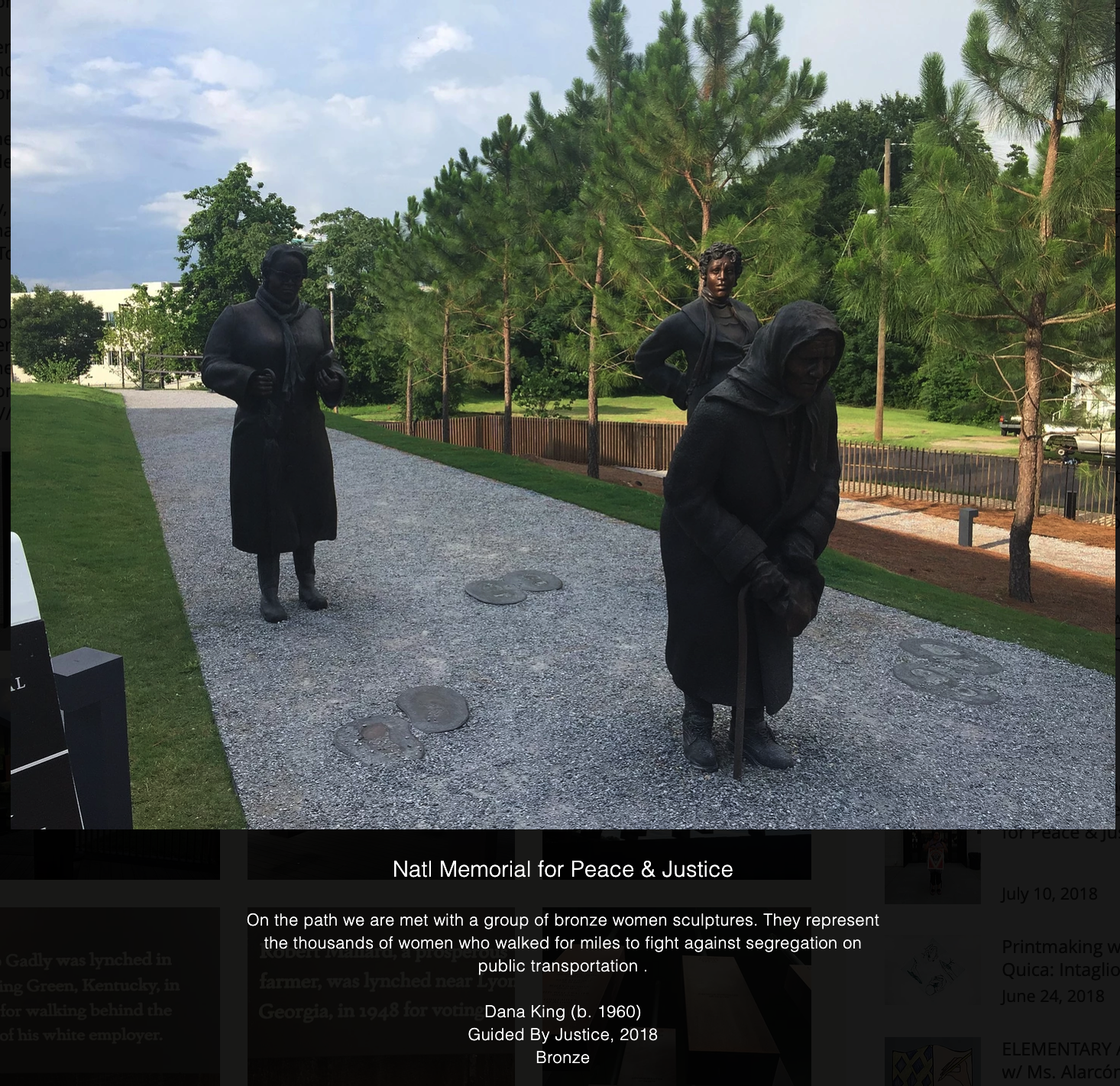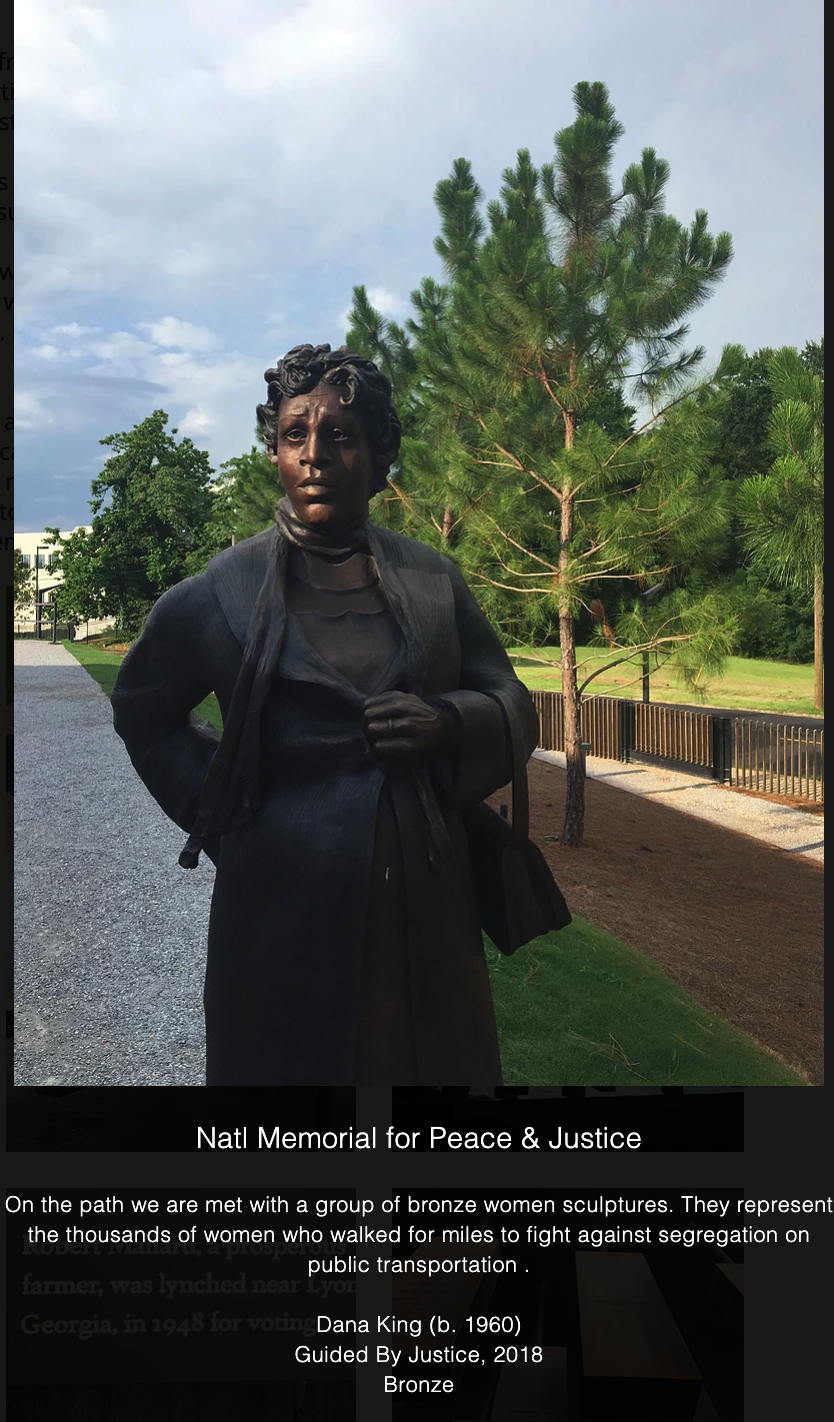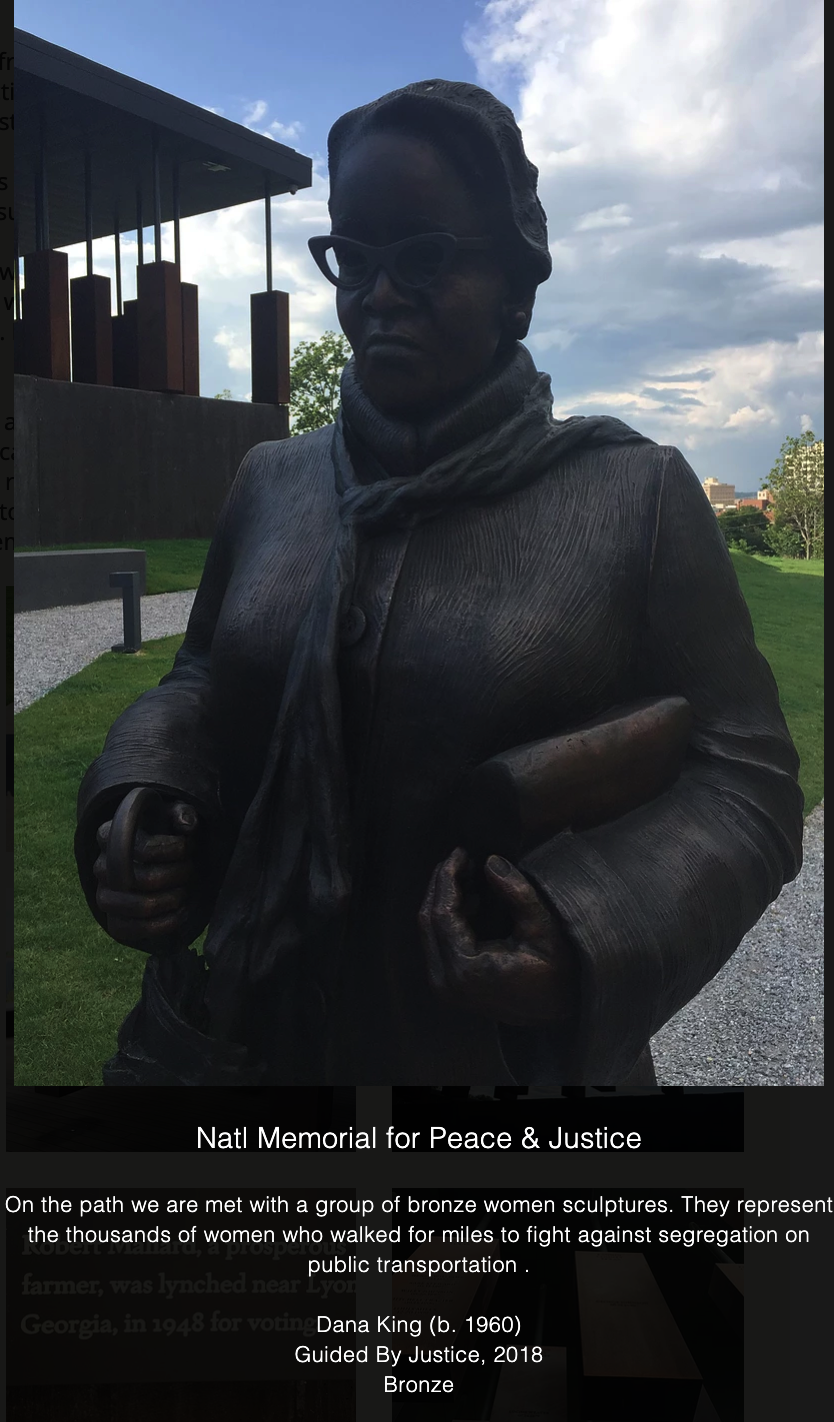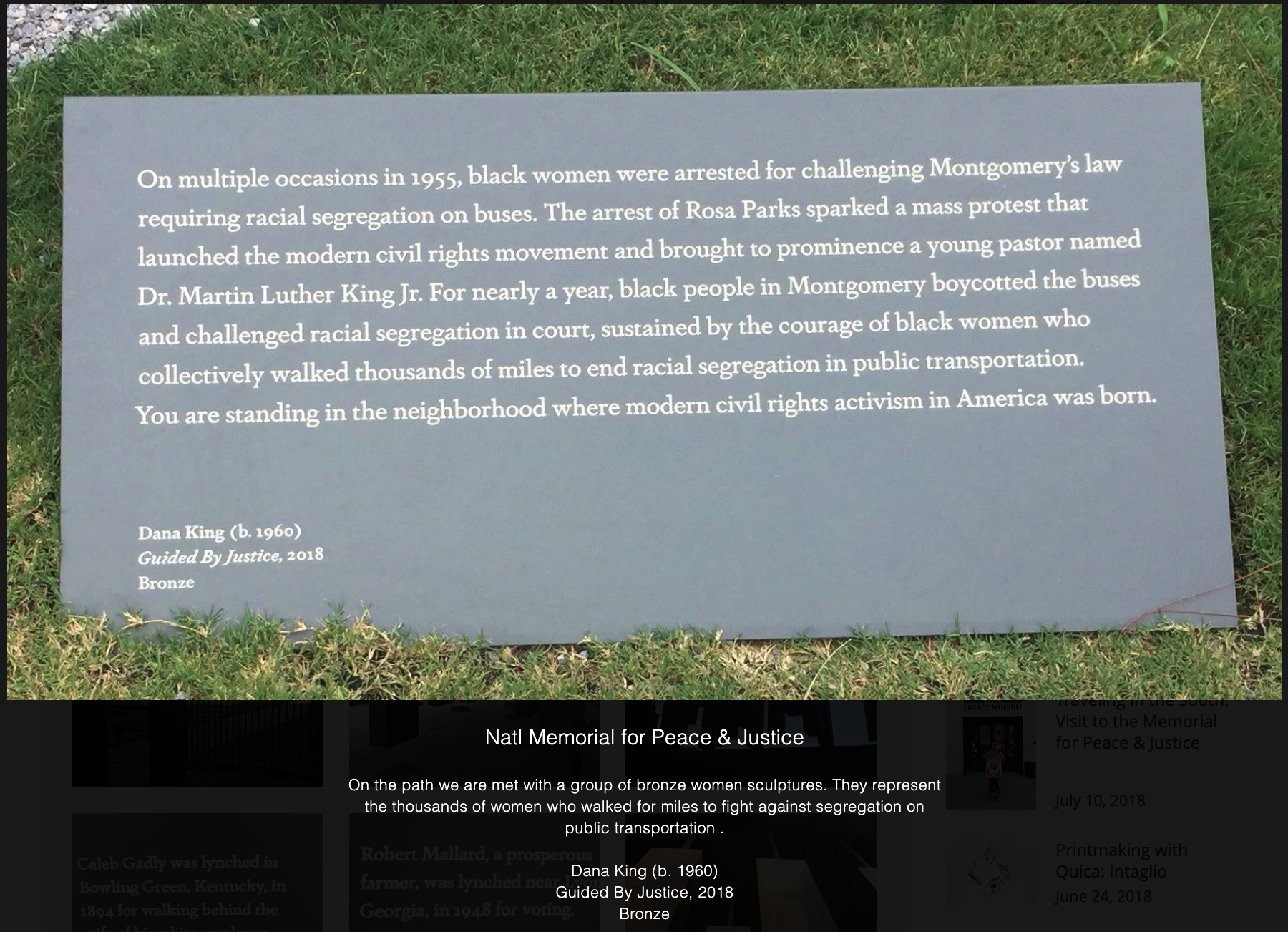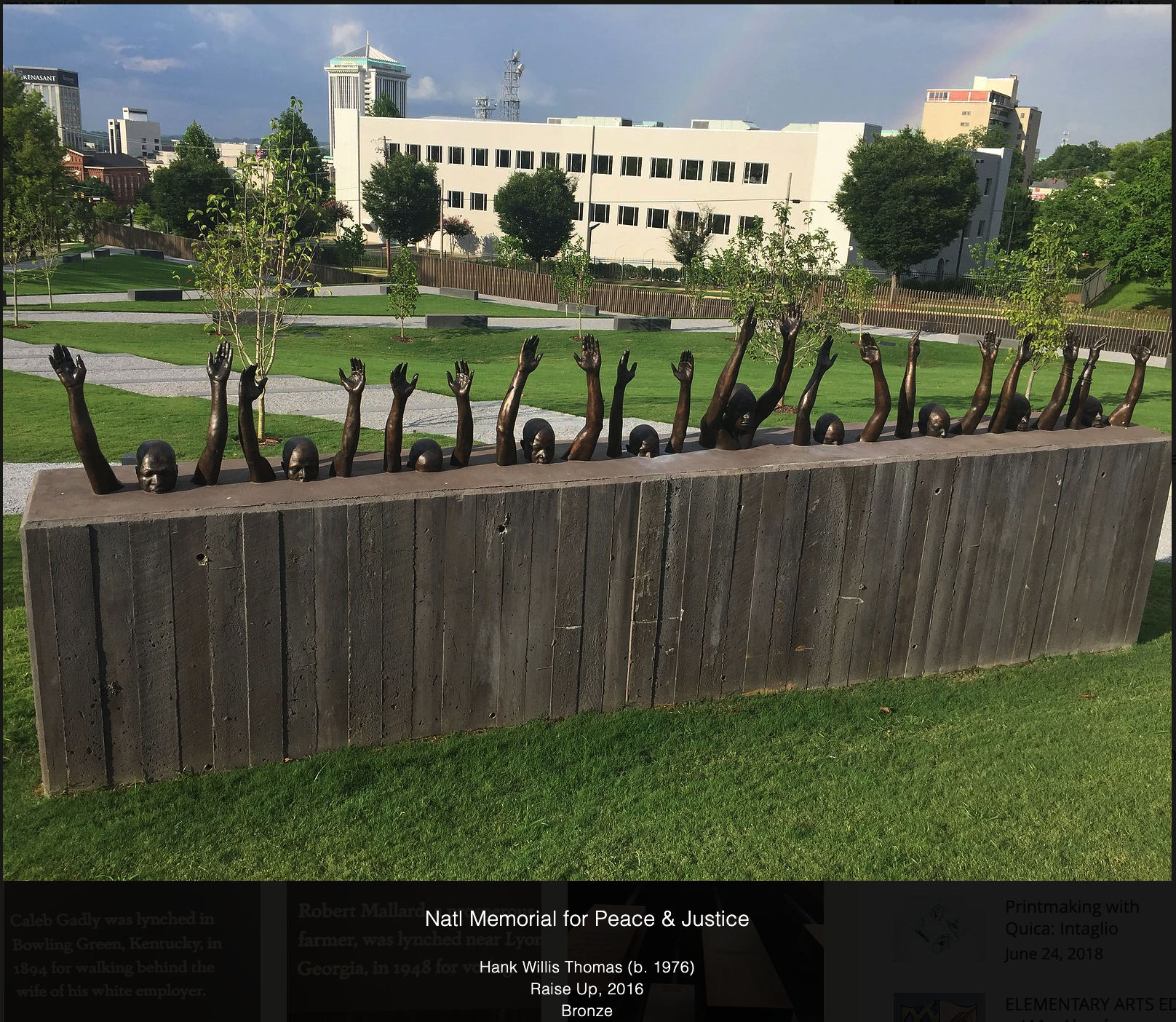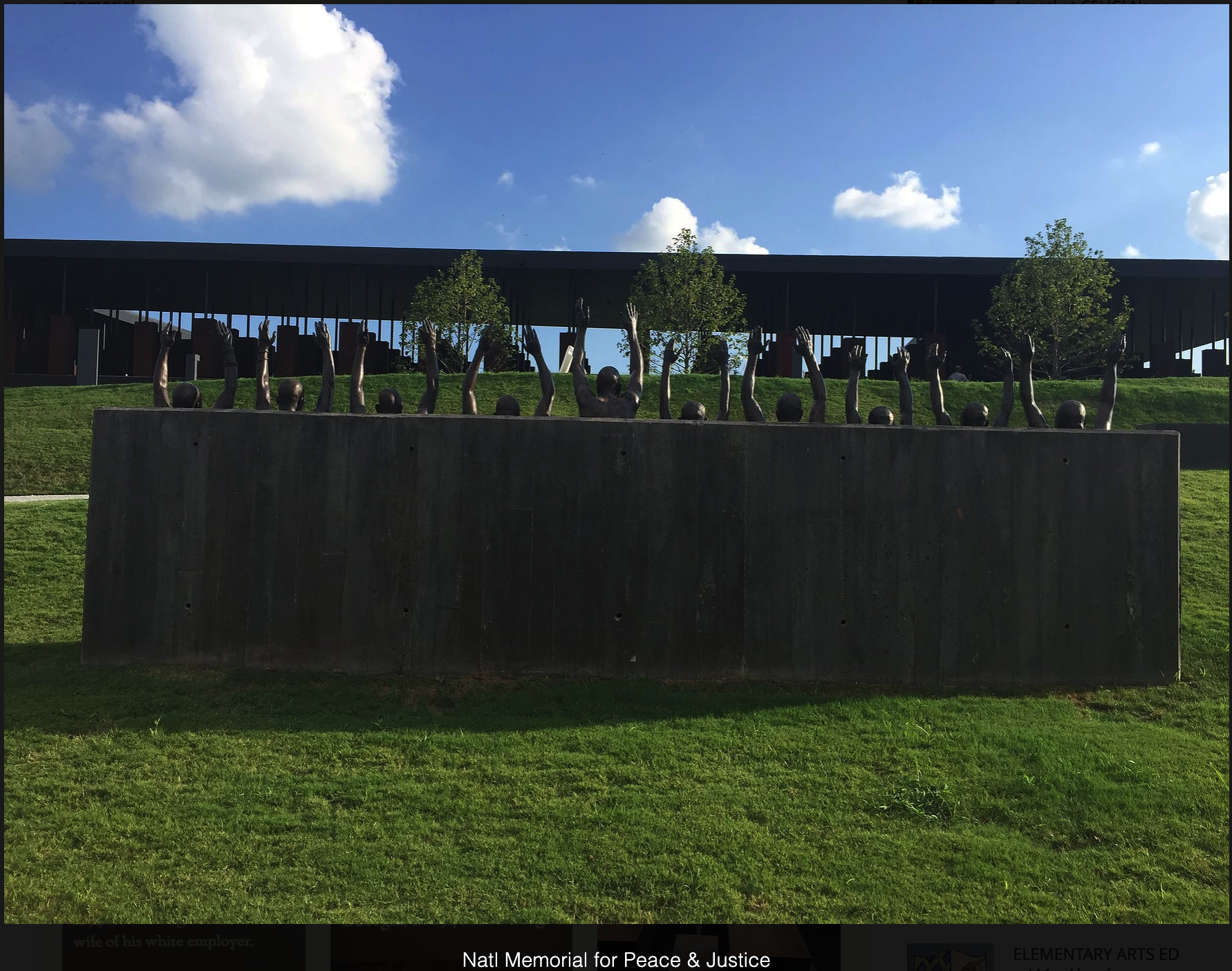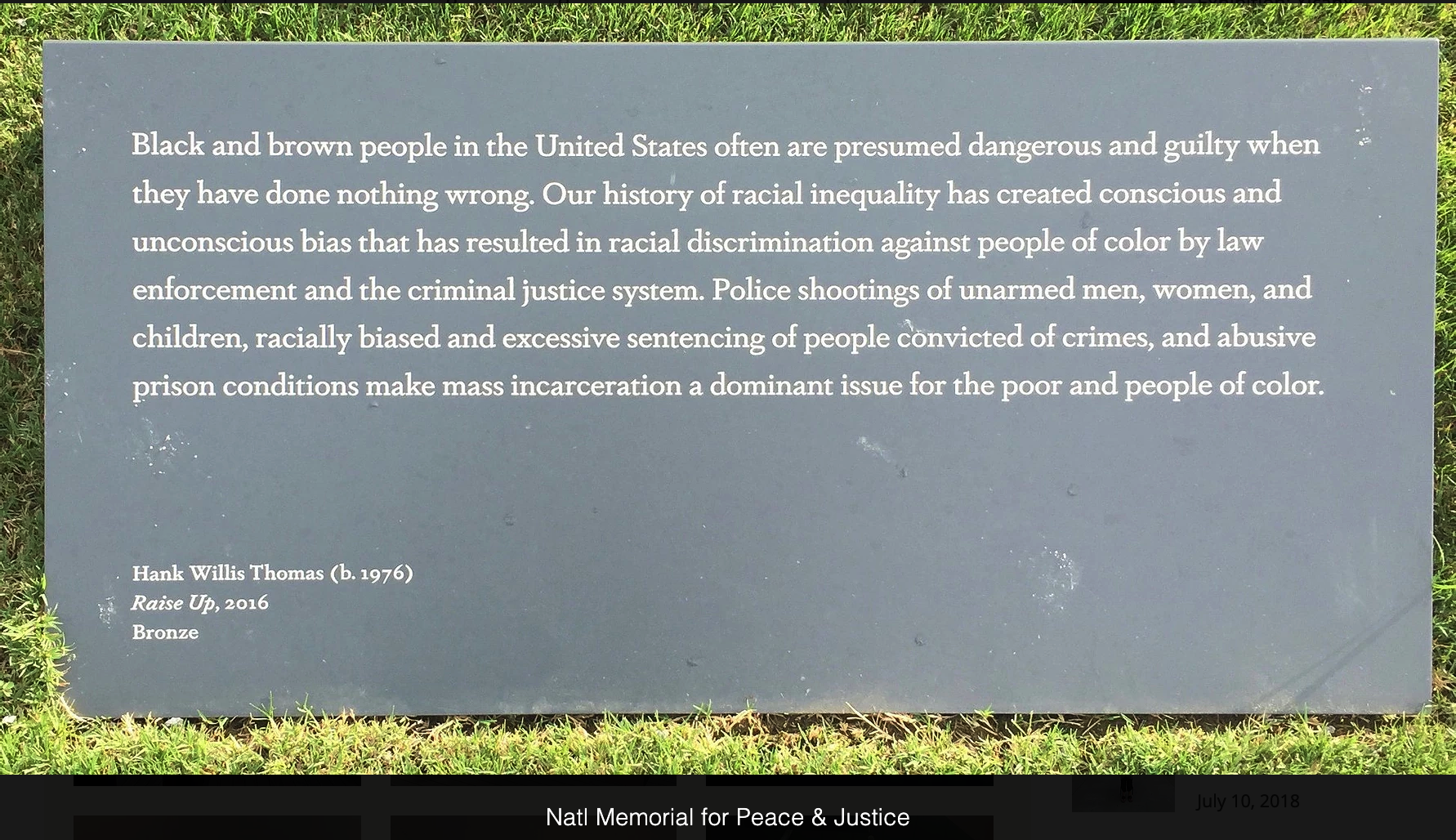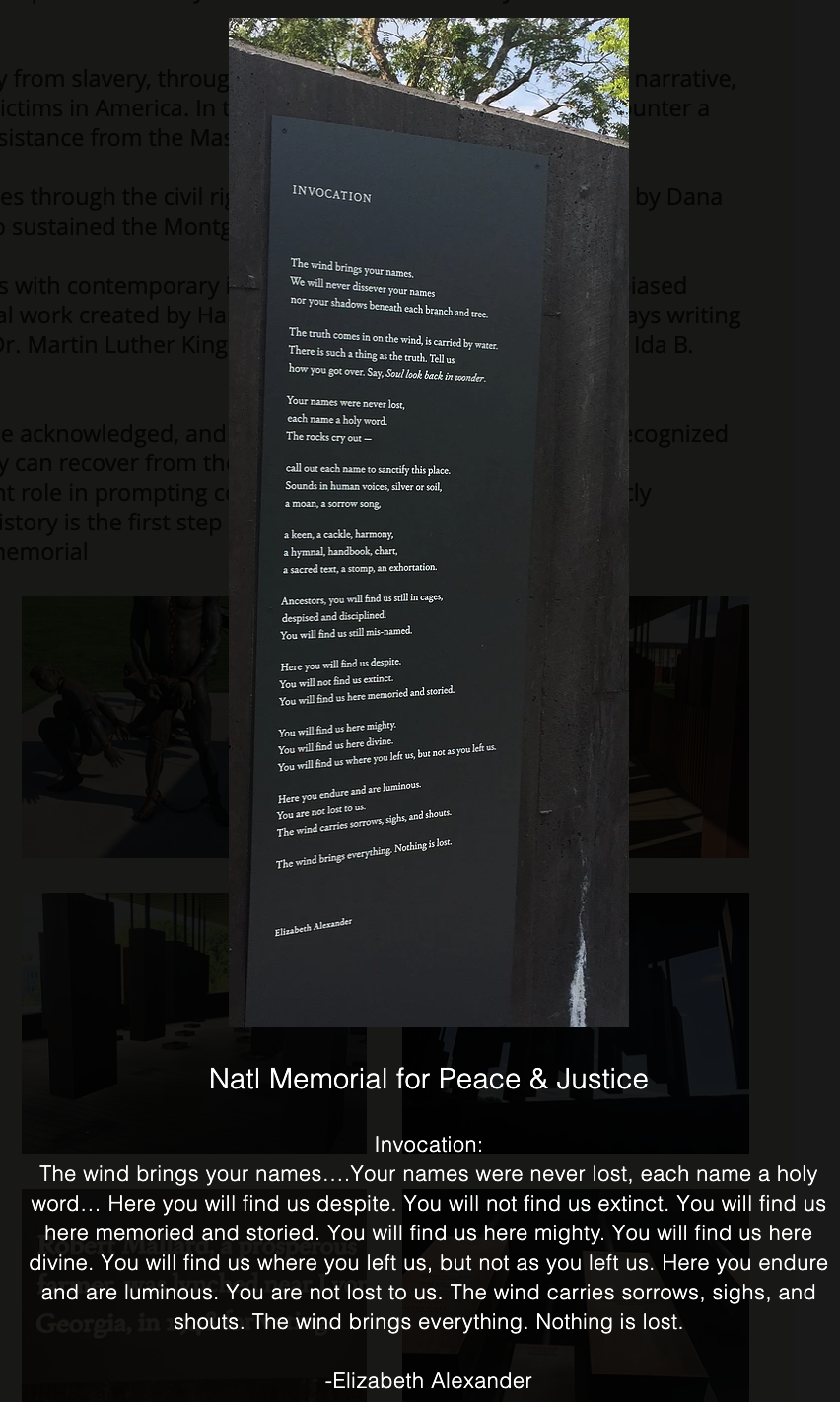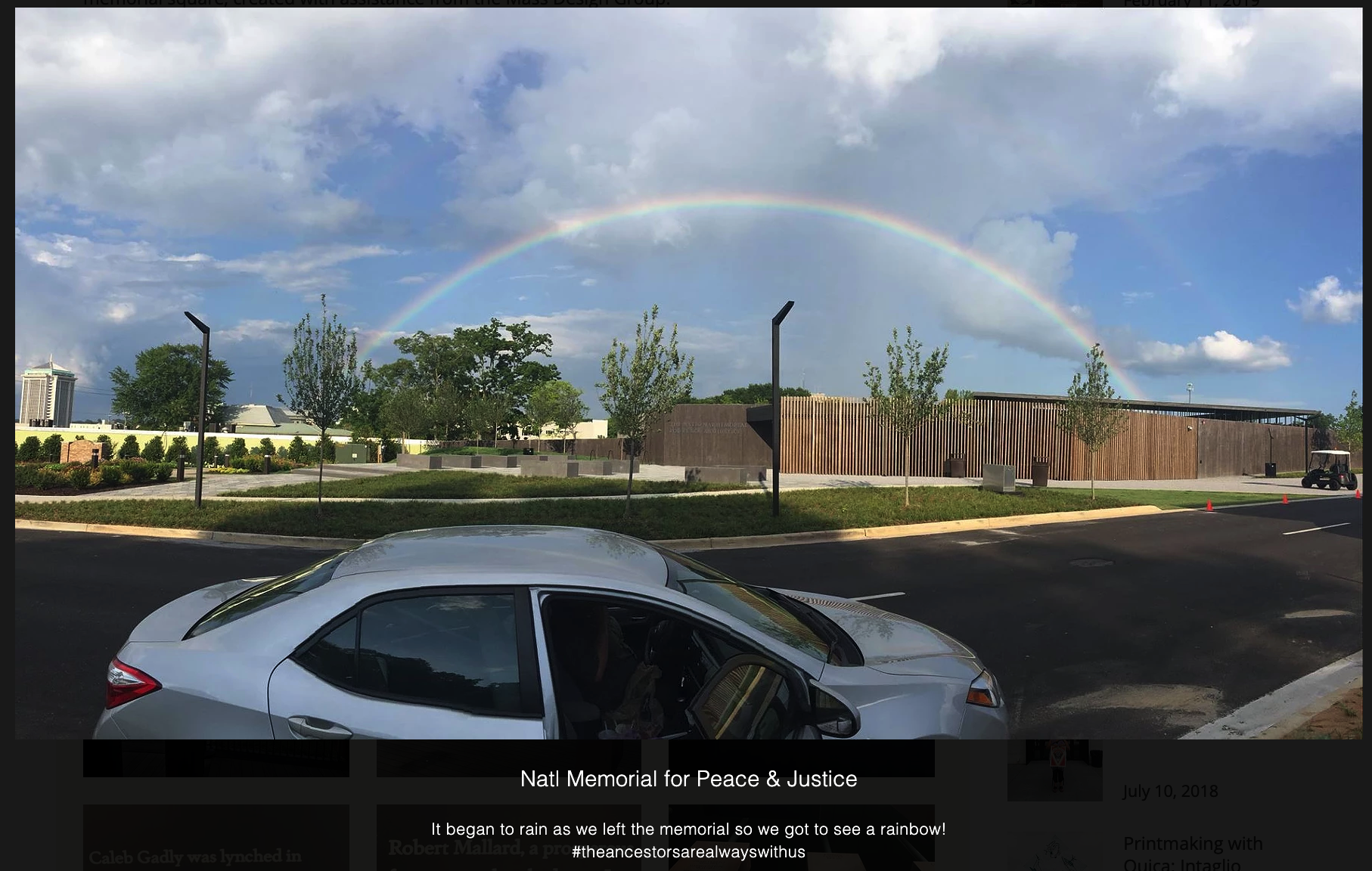Traveling in the South: Visit to the Memorial for Peace & Justice
July 10, 2018
While visiting Georgia, I was able to travel to Montgomery Alabama to visit the Legacy Museum and the Monument for Peace and Justice. Thank you to my 'road dog' Gina Aparicio for sharing this powerful experience with me <3
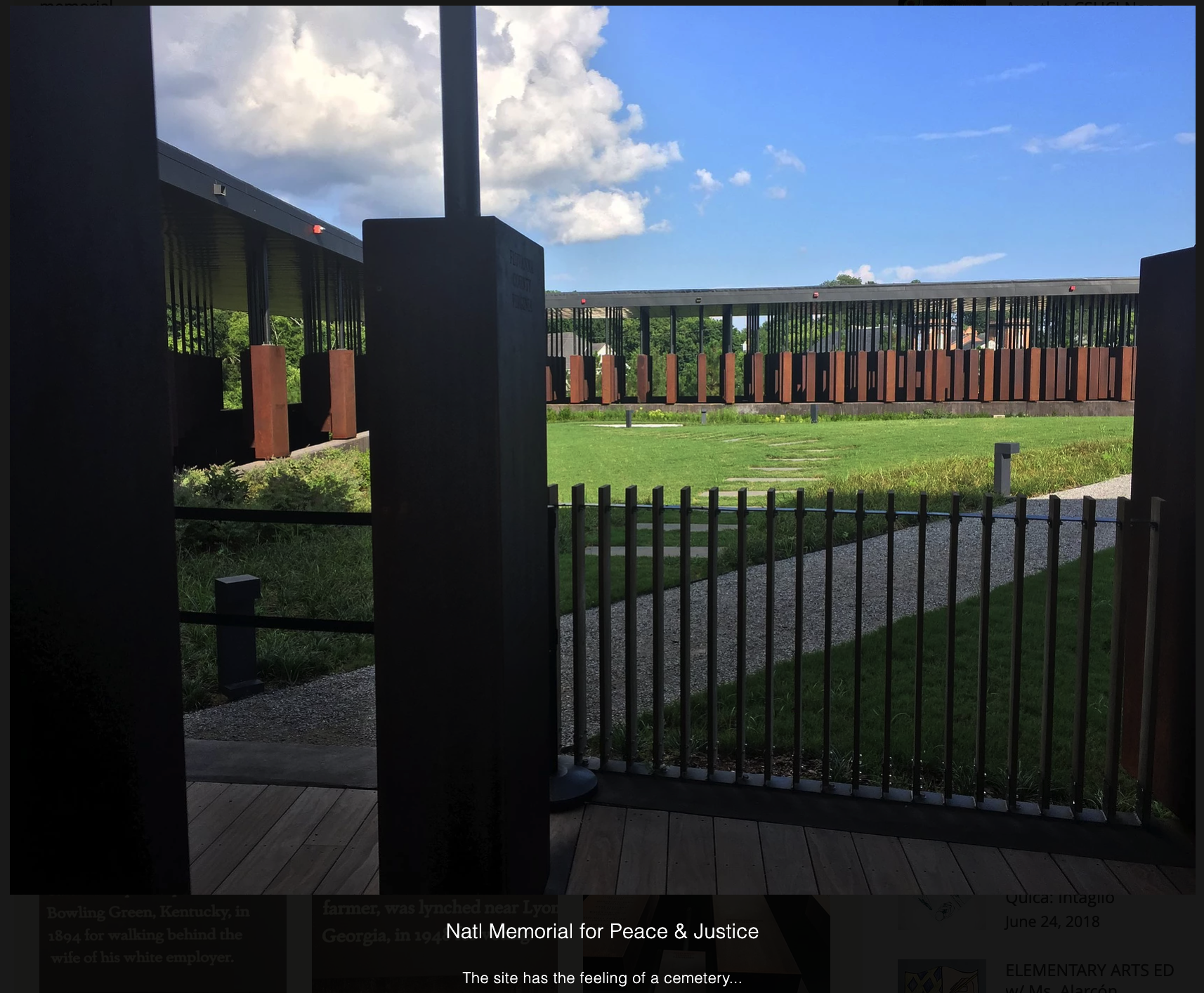
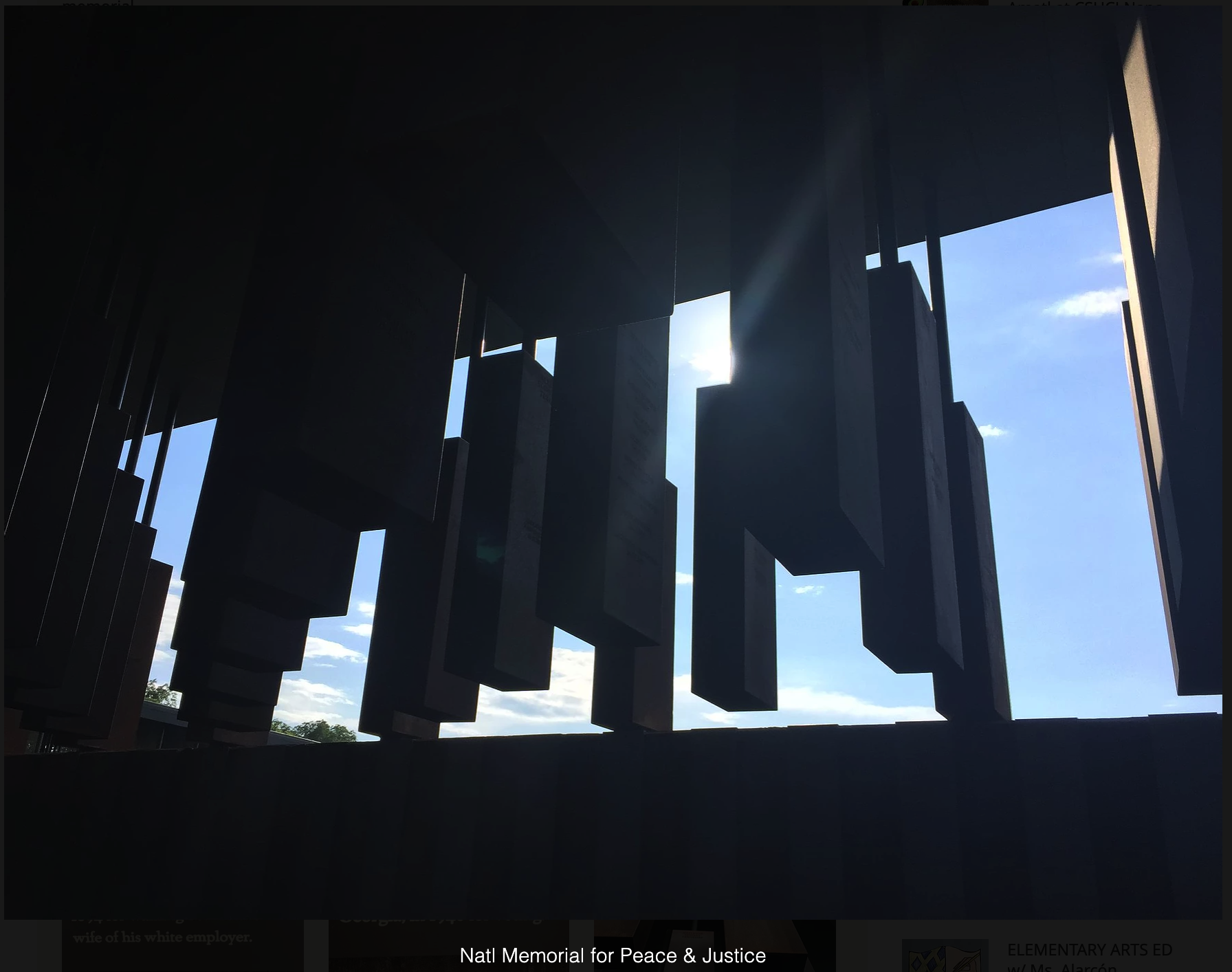

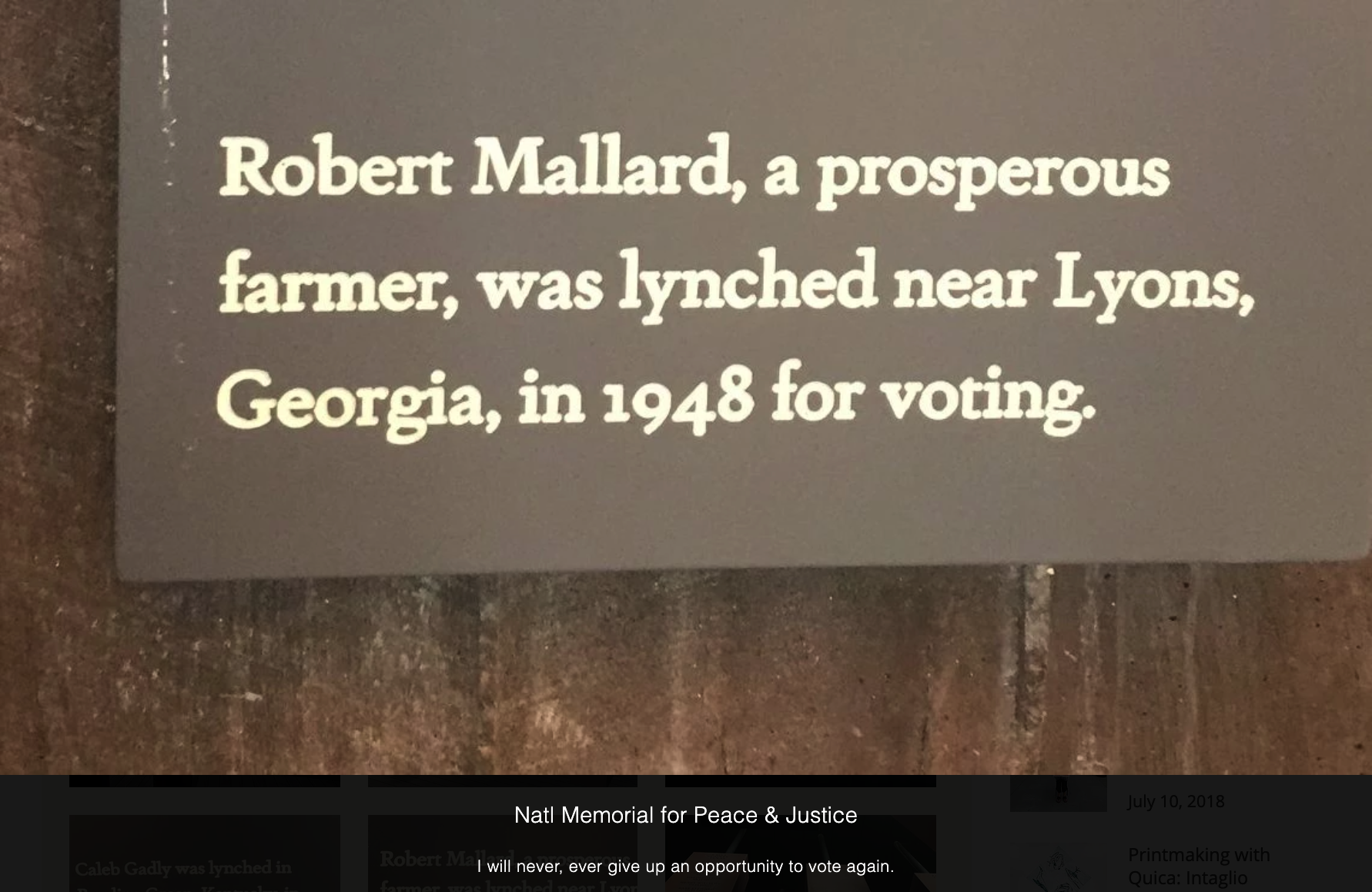
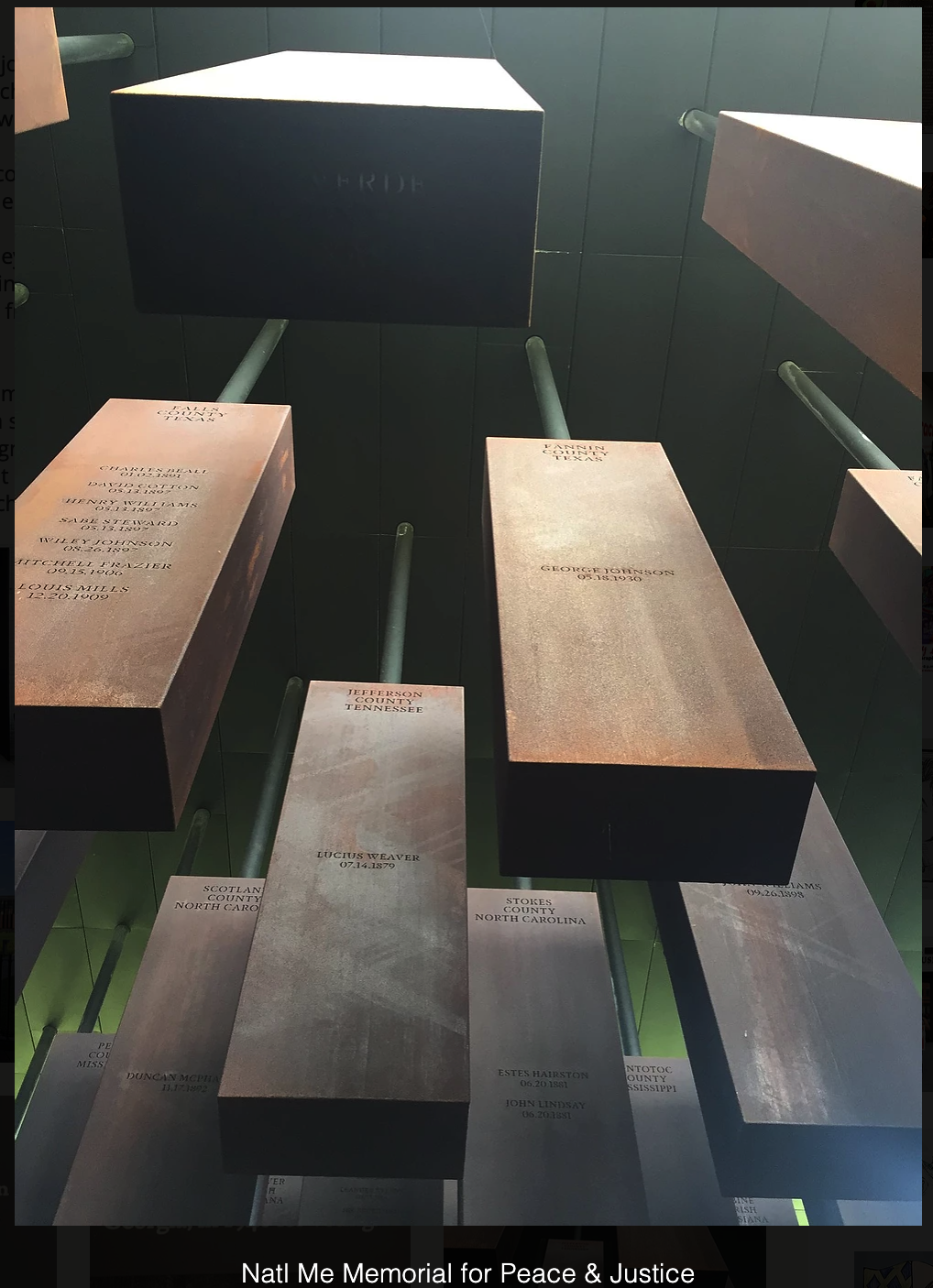
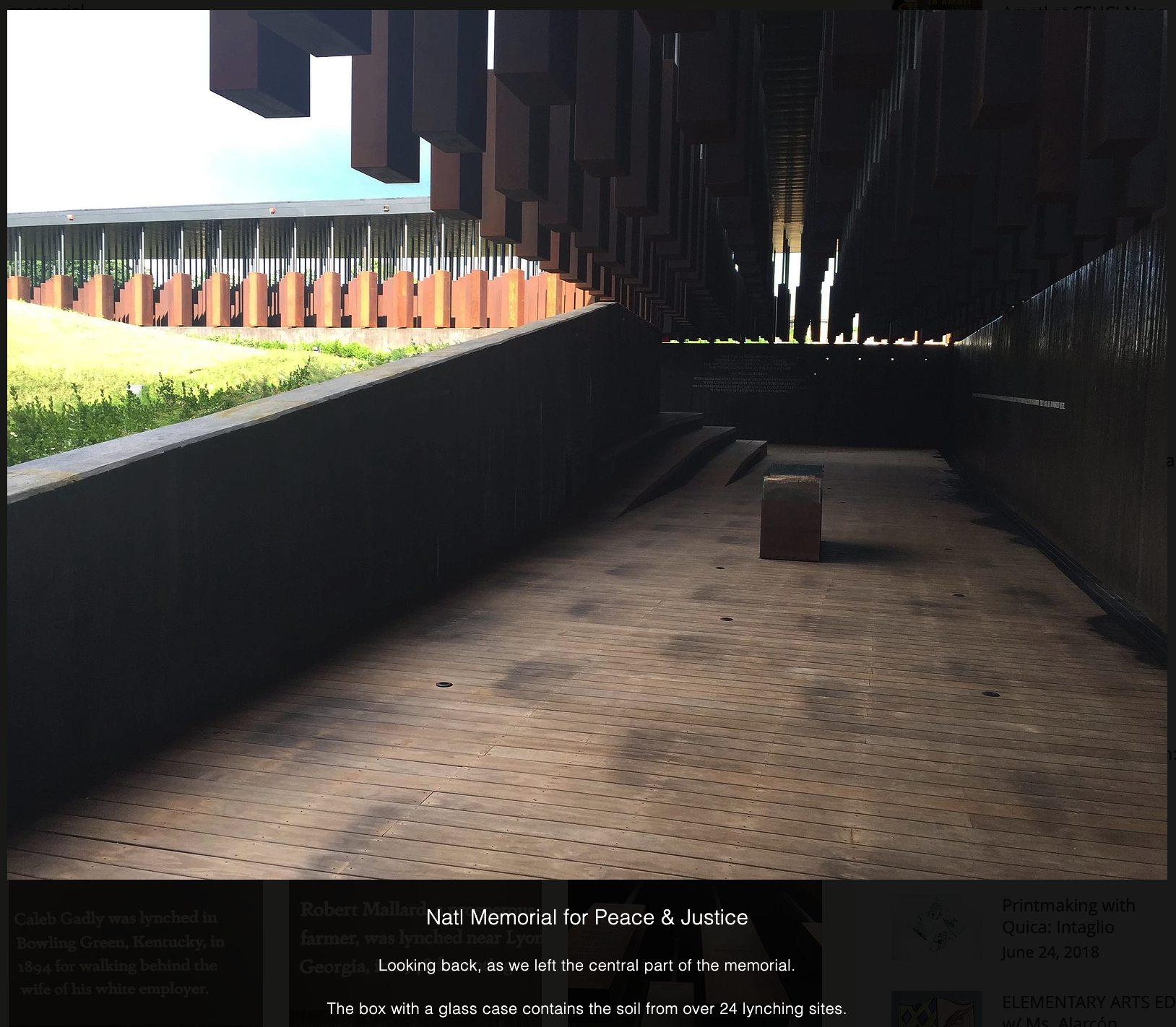
I truly hope that every person has an opportunity to visit the Museum and the Monument presented by the equal justice initiative or EJI. The memorial is a six-acre sacred space that uses over 800 six foot monuments to honor more than 4400 lynchings of black people in the United States between 1877 and 1950.
"The National Memorial for Peace and Justice, opened to the public in April of this year, and is the nation’s first memorial dedicated to the legacy of enslaved black people, people terrorized by lynching, racial segregation and Jim Crow, and people of color burdened with contemporary presumptions of guilt and police violence.
Racial terror lynchings were violent and public acts of torture that traumatized black people throughout the country and were largely tolerated by state and federal officials. Unlike the hangings of white people and outlaws in communities where there were no functioning criminal justice system, racial terror lynchings in the American South were acts of violence at the core of a systematic campaign of terror perpetuated in furtherance of an unjust social order. These lynchings were terrorism.
The Memorial for Peace and Justice was conceived with the hope of creating a sober, meaningful site where people can gather and reflect on America’s history of racial inequality. EJI partnered with artists like Kwame Akoto-Bamfo whose sculpture on slavery confronts visitors when they first enter the memorial.
EJI then leads visitors on a journey from slavery, through lynching and racial terror, with text, narrative, and monuments to the lynching victims in America. In the center of the site, visitors will encounter a memorial square, created with assistance from the Mass Design Group.
The memorial experience continues through the civil rights era made visible with a sculpture by Dana King dedicated to the women who sustained the Montgomery Bus Boycott.
Finally, the memorial journey ends with contemporary issues of police violence and racially biased criminal justice expressed in a final work created by Hank Willis Thomas. The memorial displays writing from Toni Morrison, words from Dr. Martin Luther King Jr., and a reflection space in honor of Ida B. Wells.
A history of racial injustice must be acknowledged, and mass atrocities and abuse must be recognized and remembered, before a society can recover from the trauma of mass violence. Public commemoration plays a significant role in prompting community-wide reconciliation....publicly confronting the truth about our history is the first step towards recovery and reconciliation."
https://eji.org/national-lynching-memorial
